Page 2 of 2
Re: Tie collisions
Posted: 20 Feb 2023, 04:43
by tisimst
Yes, even Dorico (4.3) has a slightly different approach, both to accidental stacking (can be changed to automatically match the others), chord stacking, and ties:
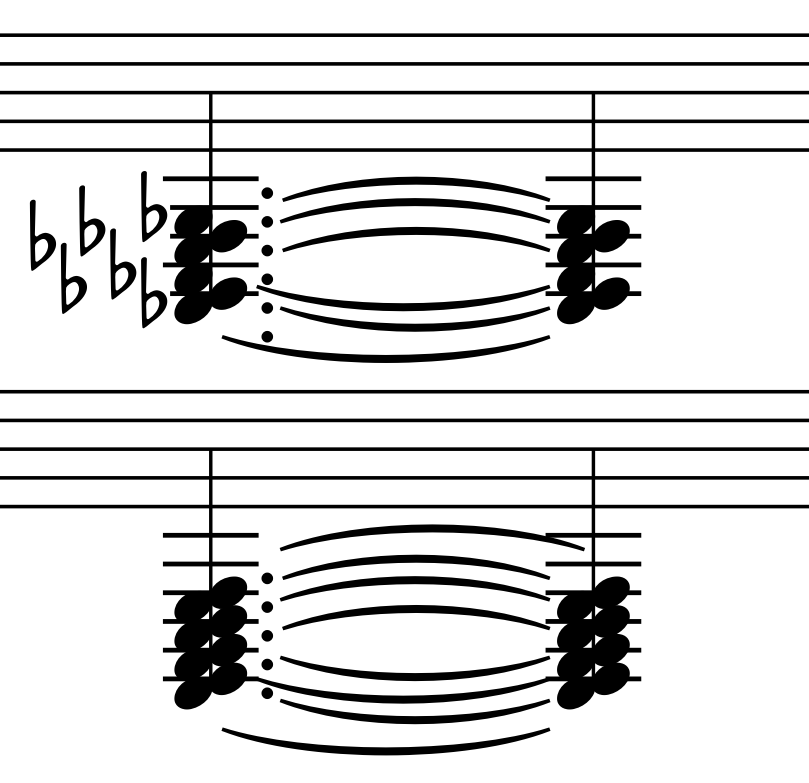
- dorico4.3-chord-ties-example.png (52.01 KiB) Viewed 16937 times
Re: Tie collisions
Posted: 20 Feb 2023, 14:22
by MichelRE
here's the default from Dorico.
Odd that it displaces those three ties in the bottom cluster.
Re: Tie collisions
Posted: 20 Feb 2023, 14:25
by MichelRE
oops, I noticed that we copied slightly different versions of the upper chord, so got different results for the ties.
Re: Tie collisions
Posted: 20 Feb 2023, 17:33
by John Ruggero
Looks like a bug on the lower staff.
Does Dorico have an option to position the tie ends on the other side of the augmentation dots like this:
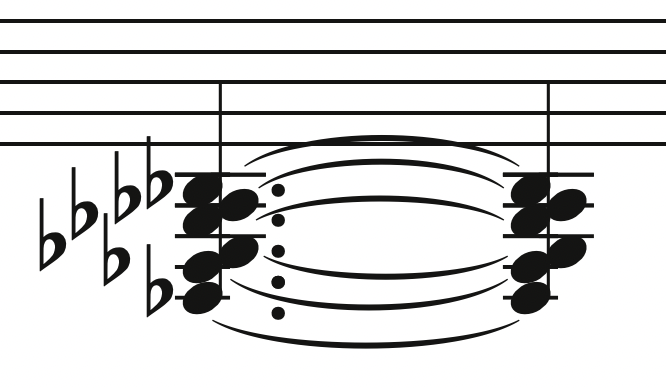
- ties.png (99.52 KiB) Viewed 16907 times
Re: Tie collisions
Posted: 20 Feb 2023, 21:14
by MichelRE
Like Finale (and I presume Sibelius as well?) Dorico allows you to manually move any item.
However, there isn't (as far as I know) a project-wide option for setting ties that way.
To be perfectly frank, however, I personally find the ties to the left of the augmentation dots very unattractive.
My understanding is that the dot is part of the note, it's a sign of its rhythmic value, like the white notehead indicates the rhythmic value of a half or whole note.
So taking that into consideration, I believe the tie should start from after the dot.
Re: Tie collisions
Posted: 20 Feb 2023, 21:41
by tisimst
John Ruggero wrote: ↑20 Feb 2023, 17:33
Does Dorico have an option to position the tie ends on the other side of the augmentation dots like this:
Yes, Dorico has a TON of settings for ties. The one that makes the most impact is the "Length of ties in chords" setting. This gives two options: Uniform or Allowed To vary (Default). If we select Uniform (and use other default settings for how augmentation dots are accounted for), we get something quite satisfactory:
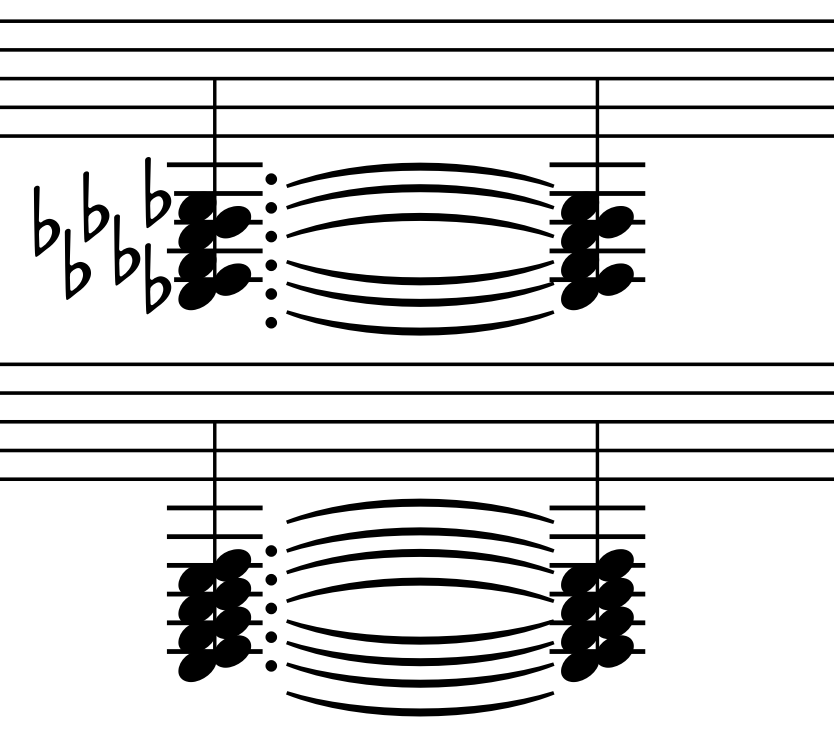
- dorico4.3-uniform-tie-length-outside-dots-in-chords.png (51.14 KiB) Viewed 16887 times
If, however, we tell it to put tie endpoints in between the note and the dot, we get this, which isn't great:
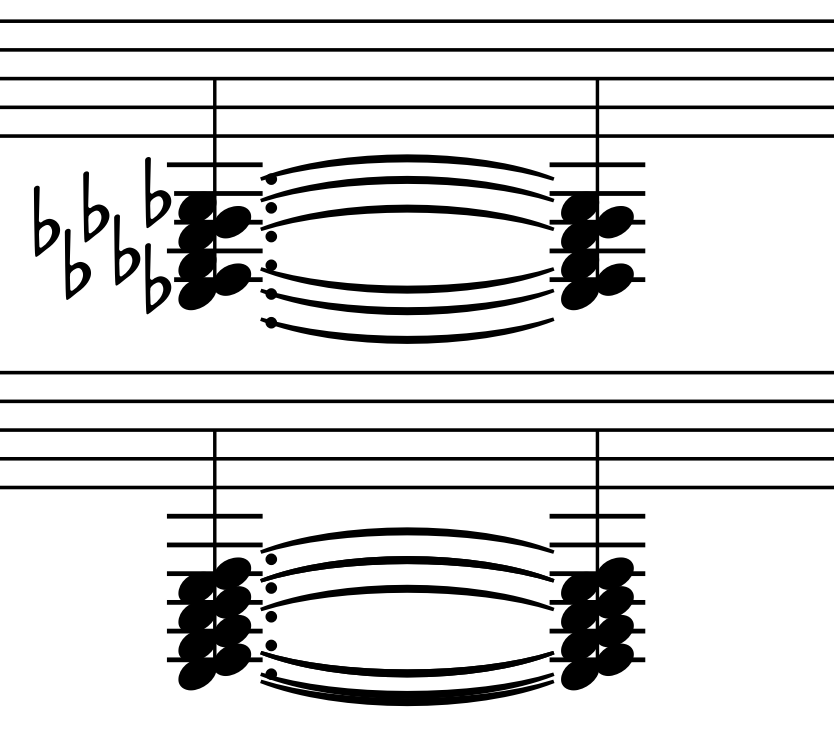
- dorico4.3-uniform-tie-length-inside-dots-in-chords.png (49.12 KiB) Viewed 16887 times
Re: Tie collisions
Posted: 20 Feb 2023, 22:30
by John Ruggero
MichelRE wrote: ↑20 Feb 2023, 21:14
Like Finale (and I presume Sibelius as well?) Dorico allows you to manually move any item.
However, there isn't (as far as I know) a project-wide option for setting ties that way.
To be perfectly frank, however, I personally find the ties to the left of the augmentation dots very unattractive.
My understanding is that the dot is part of the note, it's a sign of its rhythmic value, like the white notehead indicates the rhythmic value of a half or whole note.
So taking that into consideration, I believe the tie should start from after the dot.
Finale does have adjustments that one can make to produce this style, but I find myself doing a lot of hand adjusting too.
It'a a question of taste, of course. hautbois baryton and I think it is a beautiful style and you think it is unattractive. However, the first time I saw the tie to the right of the dot produced by computer engraving, it looked very strange to me, since I was accustomed to the other way. I just consulted quite a few editions, old and relatively new by fine publishers and in almost all of them the tie is to the left of the augmentation dot. So I would say that right of the dot is a somewhat new style. Here is an example from a relatively recent Wiener Urtext edition:
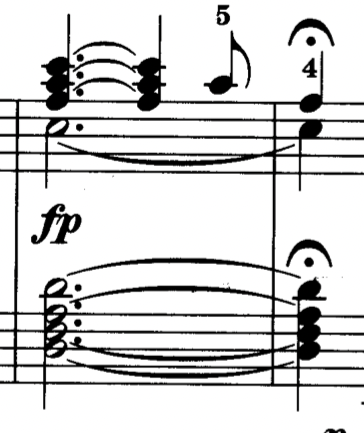
- Beethoven op 49 no 1.2.png (117.6 KiB) Viewed 16879 times
Re: Tie collisions
Posted: 20 Feb 2023, 23:48
by MichelRE
I understand. (I still find it unattractive... the examples I found in my library were mostly for very widely spaced notes, so there was room for the ties to not collide with dots or barlines. It's one thing I don't like about that Beethoven example you posted: the too-near collisions with the augmentation dots.)
Re: Tie collisions
Posted: 21 Feb 2023, 00:01
by John Ruggero
There is one problem with the right of the augmentation dot style. When a lot of notes are involved and especially if there are seconds, it might at first sight be difficult to tell which notes were tied. In the examples above, one just takes it for granted that all the notes are tied. But suppose one or two weren't? I think that leading the tie directly to the note head instead of the dot makes this clearer, which might explain the tradition.
Re: Tie collisions
Posted: 21 Feb 2023, 00:23
by tisimst
Off topic, I find it curious how each application has determined an inconsistent number of augmentation dots to use for each chord cluster... sometimes 4, 5, 6, etc. Which is correct in each case? I think that's a question for another post.